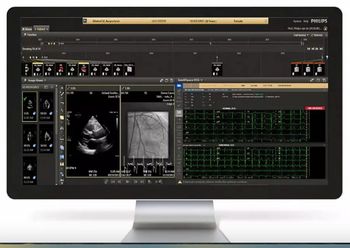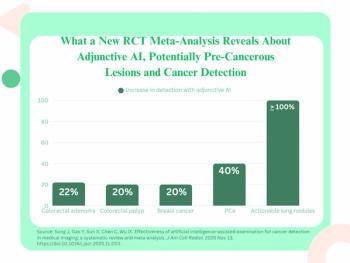
Politics of RADPAC
How RADPAC raises money and influences health care, from an RBMA 2016 meeting.
RADPAC doesn’t play sides in the political arena, they just want what’s best for radiology, Ted Burnes, director of RADPAC for the ACR, said at the Radiology Summit 2016 of the RBMA.
RADPAC raises a steady $1.3 million a year that needs to be used strategically to both build relationships and grow awareness. Much of the money is donated to individual campaigns or to raise more money for members of Congress.
“We want the folks that are great on our issues, they understand us, we understand them,” Burnes said. “But also, if they win and they know we [donated to them], that’s almost as important as us actually helping them win the race.”
RADPAC hosts five to seven fundraising events around the country for congressional members that are particularly good to radiology. In DC, RADPAC hosts about 15 fundraising events, usually in conjunction with other physician PACs, for members of Congress, which usually raise about $15,000-$20,000 on average per event.
They also arrange for about 20-30 facility visits each year for members of Congress to tour a radiology practice in their district.
“Now that members of Congress are on [social media], they like the visits even more because we can take a picture, put it out there, and people can see them in the community, doing constituent work,” he said.
The site visits are especially important because it may be the only opportunity the Congress member has to learn about radiology. According to Burnes, less than a quarter of the members of Congress have a health care background or good understanding of health care.
“I bet 70% of the members of Congress think radiologists are rad techs,” Burnes said. “We can have them come for a site visit, their staff is now forced to brief the member of Congress, and so for that 30 minutes or hour, we are teaching a member of Congress about radiology.”[[{"type":"media","view_mode":"media_crop","fid":"48497","attributes":{"alt":"","class":"media-image","id":"media_crop_7313652647875","media_crop_h":"230","media_crop_image_style":"-1","media_crop_instance":"5787","media_crop_rotate":"0","media_crop_scale_h":"0","media_crop_scale_w":"0","media_crop_w":"350","media_crop_x":"0","media_crop_y":"5","title":" ","typeof":"foaf:Image"}}]]
RADPAC also arranges about five to 10 Congress members to speak every year at chapter meetings, creating another opportunity for education and outreach.
Physician PACS, in general, are a significant moneymaker in DC.
“If you are going to fundraise for a member of Congress, guess the first industry you call: the doc community,” Burnes said.
Radiology is well positioned compared to the rest of the physician PACs, but has struggled to grow.
According to Burnes, RADPAC raises a steady $1.3 million a year, which makes it the 2nd highest physician PAC in hard money raised in 2015. The American Society of Anesthesiologists, the “gold standard” per Burnes, raised about $1.9 million in 2015. The American Association of Orthopaedic Surgeons is a close third to radiology, with $1,340,000 in 2015 (compared to radiology’s $1,347,750).
The Orthopaedic Surgeon PAC, however, has more than double the percentage of members than RADPAC that contribute to their PAC, with 30% donating, versus only 14% of radiology’s membership donating to RADPAC. The other PACs with high percentages of giving in 2015 include:
• American Society of Anesthesiologists: 21%
• American College of Emergency Physicians: 20%
• American Academy of Ophthalmology: 17%
• American Dental Association: 16%
The money does more than just flow, though. RADPAC counts among its wins the 25% to 5% MPPR cut, a five-year battle during which RADPAC contributed just under $6 million to members of Congress and candidates. Savings from the cut are equal to about $352 million over 10 years, Burnes said.
“A lot of forces went into us being able to get that 25% down to 5%, grassroots, policy data, RBMA providing data, building relationships with members of Congress and staff,” he said. Monetarily, it was a 58:1 ratio return, he said.
Other RADPAC wins include the two-year delay for changes made to mammography screening guidelines and the SGR repeal.
This year’s Capitol Hill Day, which takes place during ACR 2016, ACR wants to target the USPSTF and virtual colonoscopy. Instead of changing the USPSTF recommendations, the ACR wants to push for who makes the recommendations.
“No radiologist was on the task force advising them on what the mammography screening should be,” he said.
“Virtual colonoscopy is a heavy lift, this will cost money, similar to MPPR, this will be a five-year battle,” he said. “We’re starting it now.”
Newsletter
Stay at the forefront of radiology with the Diagnostic Imaging newsletter, delivering the latest news, clinical insights, and imaging advancements for today’s radiologists.

























